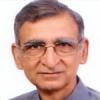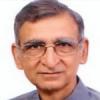Lord Ram has served the BJP very well so far. It was the Ram temple issue around which seeds of the divisive politics were sown all over the country. The Rath yatra of Lal Krishna Advani precipitated deeper polarization and was followed by the trail of violence.
 The well planned Babri demolition further intensified the communal violence and the politics in the name of religion in the country.
The well planned Babri demolition further intensified the communal violence and the politics in the name of religion in the country.
The reward of this was the strengthening of the electoral base of BJP, due to which the party gradually came to the fore, and from a marginal party in the national scheme of things it emerged as the single largest party in 1996.
With the 2014 elections it managed to get the simple majority (282 Lok Sabha seats, with 31% of votes). The promise of building the temple has been constantly on the agenda of the BJP but that has been a carrot which cannot materialize as a construction; but can keep serving BJP’s purpose of deceiving and polarizing the people.
This promise of Ram Temple is an allurement for sections of society. This promise has been made despite knowing well that the issue is pending in the Supreme Court and it cannot be built legally. The RSS combine also knows that demolitions can be incited illegally while constructions cannot be done illegally, still the propaganda can serve as an important electoral tool.
As UP elections (2017) are approaching, the issue of Ram Temple is being invoked yet again. In the Dussehra rally in Lucknow Prime Minister Narendra Modi invoked the slogan of Jai Shree Ram (October 2016).
This was the battle cry of the RSS combine as a build up to the Babri demolition in 1992.
A few days later, while inaugurating the power plant PM Modi was greeted with the same war cry symbolic of Hindu nationalism which has been the agenda of the BJP-RSS.
To supplement the efforts in the communal direction the BJP declared the project of a Ram Museum in Ayodha, and not to be left behind the Uttar Pradesh Government of Akhilesh Yadav decided to declare a Ram Leela theme park around the same time.
As such the Ram temple is the trade mark of BJP politics but seeing the electoral dividends which it has yielded for the ruling party, other political parties are also trying to jump in to this fray. Even Congress scion Rahul Gandhi during his Kisan Yatra paid a visit to the Hanuman Gadhi temple in Ayodhya.
To keep the pot boiling Vinay Katiyar of the BJP, who was part of the demolition squad in 1992, said that the museum-theme park is not the real thing, they are mere lolly-pops, real thing i.e. temple has to be built.
While RSS supremo Mohan Bhagwat has been declaring that the temple will be built in his life time, other worthies from the RSS combine have been more exactl saying the temple will be constructed during the regime of the current Modi Government.
As per the Allahabad high court judgment; the land of the Babri mosque should be divided into three parts. As per this ruling, one third of the land has gone to the Babri Masjid Action committee, another one third to Ram Shila Nyas and another third to Ram lalla.
This judgment used people’s faith as the foundation. This must have been a rare case where prevalent faith of people has been made the ground for a judgment. History has been mixed up with faith.
Lord Ram has been a strong cultural, religious and mythological entity in this part of South Asia. While giving the affidavit about the Ram Setu issue the UPA Government did say that Lord is a mythological figure. This statement is being heavily criticized by spokespersons of RSS, forgetting the clear cut distinction between history and mythology. One can’t deny the existence of Lord Rama at cultural and mythological levels, still to say that it is history is altogether a different matter.
With the rise of communal politics, on the one hand Lord Ram is being presented as a historical figure, that’s how communalists wanted to claim the Babri Masjid land on the ground that this was his place of birth.
On the other hand the cultural existence of Ram is being reduced to a mere religious one. One recalls that Dr. M. M. Basheer an important scholar of Ramayana from Kerala was forced to stop his column on Ramayana in the newspapers for being a Muslim.
Similarly famous actor Nawajuddin Siddiqui was stopped from playing the role of Ramayan character Marich in his village RamLila for his being a Muslim. The communalization of Lord Ram is a sad part of the story.
As such during the last few years, BJP’s assault on democratic values by playing communal games has been shifting the centre of gravity of Indian politics towards politics in the name of religion.
That’s why Rahul Gandhi has to visit a temple in Ayodhya as a public event. That’s how the Samajwadi party on the one hand is promoting theme parks like Ram Lila and on the other has been letting the communal violence continue in UP.
Starting from Muzaffarnagar (2013) the SP has played a dubious role due to which the BJP agenda of polarization has got a boost.
The calculation of the BJP is that low intensity communal violence will get it Hindu votes and on parallel lines the Samajwadi party feels this violence will make Muslims vulnerable and they will gravitate to it for protection.
As such the BJP now has equipped itself with many more emotive issues. It is out to politicize the surgical strikes in its favor by claiming ‘it is for the first time such a brave act has taken place’.
It is the leadership of PM Modi due to his training by RSS that such decisions are possible now. Falsehood and chest thumping are dominating sections of the media. BJP also has the issue of beef to boost its electoral campaign. So the grounds of democracy, issues related to material existence, rights and justice are being substituted by emotive issues. There is urgent need to restore the democratic order.







Comments
BJP will not win because ram has gone to vanavaas permanently.
Add new comment